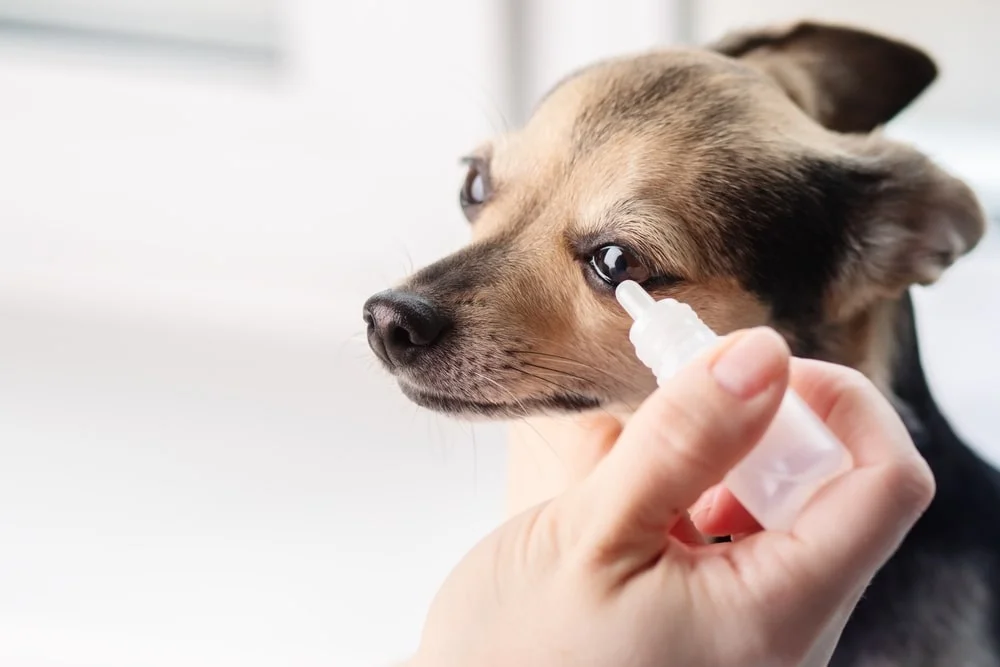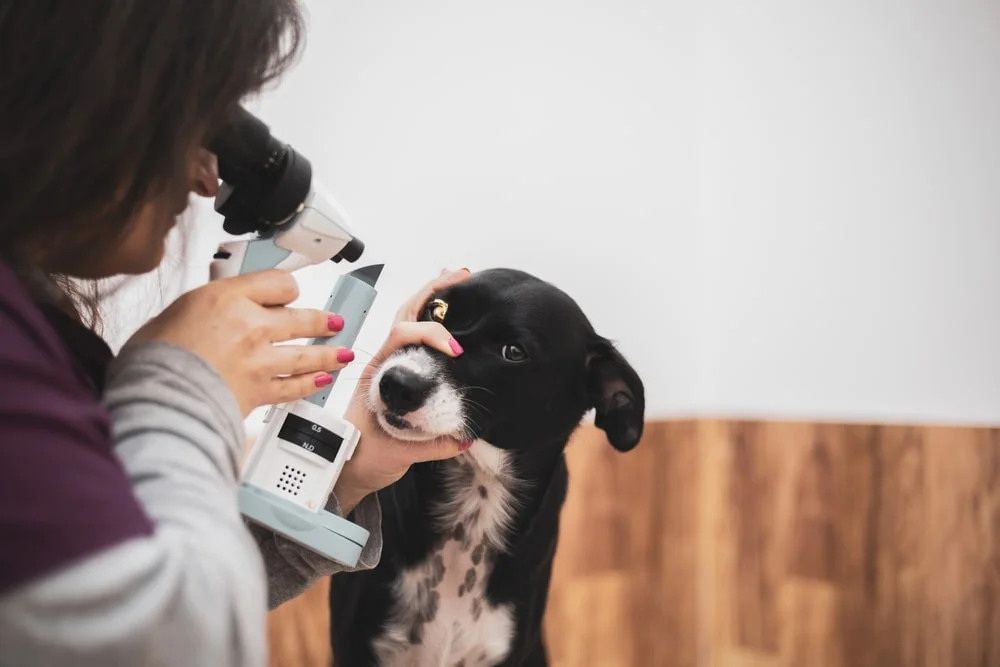PET HEALTH
It can be easy to overlook certain aspects of our dogs’ health, including their eyes. Dog glaucoma is a common dog disease you might not consider when thinking about your pup’s well-being. Like the condition that affects humans, glaucoma in dogs is a disease that causes increased pressure within the eye, known as intraocular pressure (or IOP).1 Keep reading to learn how to recognize symptoms of glaucoma in your dog, how to treat it, and how pet insurance can help cover related expenses.
Symptoms of Glaucoma in Dogs
Sometimes, identifying the signs of glaucoma in dogs can be as easy as looking into your pup’s eyes. That’s because dog glaucoma causes obvious physical changes, including:1
- Cloudy or bluish-looking cornea
- Physical swelling of the eye, accompanied by red sclera (the part of the eye that’s usually white)
- Watery discharge from the eye
There are also other, subtler signs of dog glaucoma. You may notice your dog keeping one eye partially closed and frequently rubbing it with their paw. Glaucoma can also cause a reduced appetite and low energy. In some cases, your pup may become entirely unresponsive.1 These changes in your pet’s behavior can be cause for concern on their own. When they occur alongside the physical symptoms listed above, your dog may be suffering from glaucoma.
It’s important to note there are two types of dog glaucoma: acute and chronic. Both share the same symptoms, but acute glaucoma causes them to appear rapidly.1 Acute glaucoma should be treated as an emergency, since it can quickly lead to blindness if left untreated for too long.
Is glaucoma painful for dogs?
Yes. The increased IOP aggravates the sensitive tissues surrounding the eyeball, while also causing damage to the eye itself. Specifically, prolonged high IOP can damage the retina and the optic nerve. These are key components in a properly functioning eye; if damaged, loss of vision can quickly follow.1
A MetLife Pet Policy May Help Cover Dog Glaucoma Costs
What Causes Dogs to Get Glaucoma?
The cause of dog glaucoma depends on whether it’s primary or secondary glaucoma.1
Primary glaucoma is the result of a genetic condition leading to inadequate drainage of the aqueous fluid within the eye. Secondary glaucoma is usually an add-on effect of a separate eye injury or disease, such as:1
- Tumors
- Damage to the lens
- Bleeding in the eye
- Interior eye infections
Most dogs with glaucoma suffer from secondary glaucoma. If your pup recently injured their eye or was diagnosed with an eye disease, be on the lookout for signs of dog glaucoma.
What breeds are more likely to get glaucoma?
Dogs may be more likely to develop glaucoma if they’re purebred. That’s because the limited gene pool, while preserving characteristics desired by dog breeders, also preserves a genetic predisposition to specific diseases, including glaucoma. This goes for all purebred dogs, but those that are particularly vulnerable to glaucoma include:1
- Akita
- Basset hound
- Beagle
- Boston terrier
- Bouvier des Flandres
- Chow chow
- Cocker spaniel
- Dalmatian
- English springer spaniel
- Flat-coated retriever
- Giant schnauzer
- Great Dane
- Greyhound
- Husky
- Italian greyhound
- Malamute
- Mastiff
- Miniature pinscher
- Miniature schnauzer
- Norwegian elkhound
- Poodle
- Samoyed
- Shar-pei
- Shih tzu
- Smooth fox terrier
- Welsh springer spaniel
- Wire Fox Terrier
Glaucoma in Dogs: Treatment and Expenses
Although glaucoma can be a serious condition, treating it can be relatively simple. First, your vet will want to measure your dog’s IOP using a device called a tonometer (the same device used to measure your own IOP during an eye exam).1 Once they’ve diagnosed your dog with glaucoma, prescribing a pain reliever is often the next step. This will help your dog manage the pain, but it won’t directly reduce their IOP.
For that, vets usually turn to medication that can increase fluid drainage while decreasing fluid production. This can help in the short-term, while drugs like methazolamide or acetazolamide may be prescribed to reduce pressure in the long-term.1
For severe cases of dog glaucoma, your vet may recommend turning to laser surgery, known as cyclophotocoagulation, to help relieve IOP.2 In cases where the glaucoma doesn’t respond to treatment, or if your dog has already lost vision in their eye, it might be necessary to remove the affected eye altogether.
The cost of treating dog glaucoma
Addressing your pup’s glaucoma can quickly become expensive. We’ve broken down the average cost, from initial exam to surgery:
- First exam: About $2003
- Follow-up exams: About $1003
- Methazolamide: Around $140 per bottle4
- Acetazolamide: Between $24 and $33 per bottle4
- Topical medication: Around $120 per bottle2
- Cyclophotocoagulation: Between $2,500 and $3,0002
- Eye removal: About $2,0003
Can Pet Insurance Help Cover Glaucoma in Dogs?
There’s no way to know exactly how much you’ll pay to treat your dog’s glaucoma. You could end up only paying a few hundred dollars if the glaucoma responds to medication. Or you could have a bill in the thousands if it comes down to surgery.
However it plays out, your dog’s health is what matters. That’s why pet parents may consider pet insurance to be so important. It can help relieve the financial stress of unexpected vet bills, leaving you to focus on your fur baby’s recovery. That includes the expenses that come with treating dog glaucoma.
For an idea of how much pet insurance could help, let’s look at the real-life example of Trudy the Rhodesian ridgeback. At 11 years old, a glaucoma diagnosis was particularly worrisome for her parents. But they knew their dog insurance plan from MetLife Pet could help them afford the treatment Trudy needed. Sure enough, they were reimbursed for over a third of the $2,800 surgery bill. With the financial pressure lessened, Trudy’s parents could focus on helping her get well.5
Don’t wait for the worst to happen. Help make sure you and your pup are prepared for any eventuality with a free pet insurance quote today.


